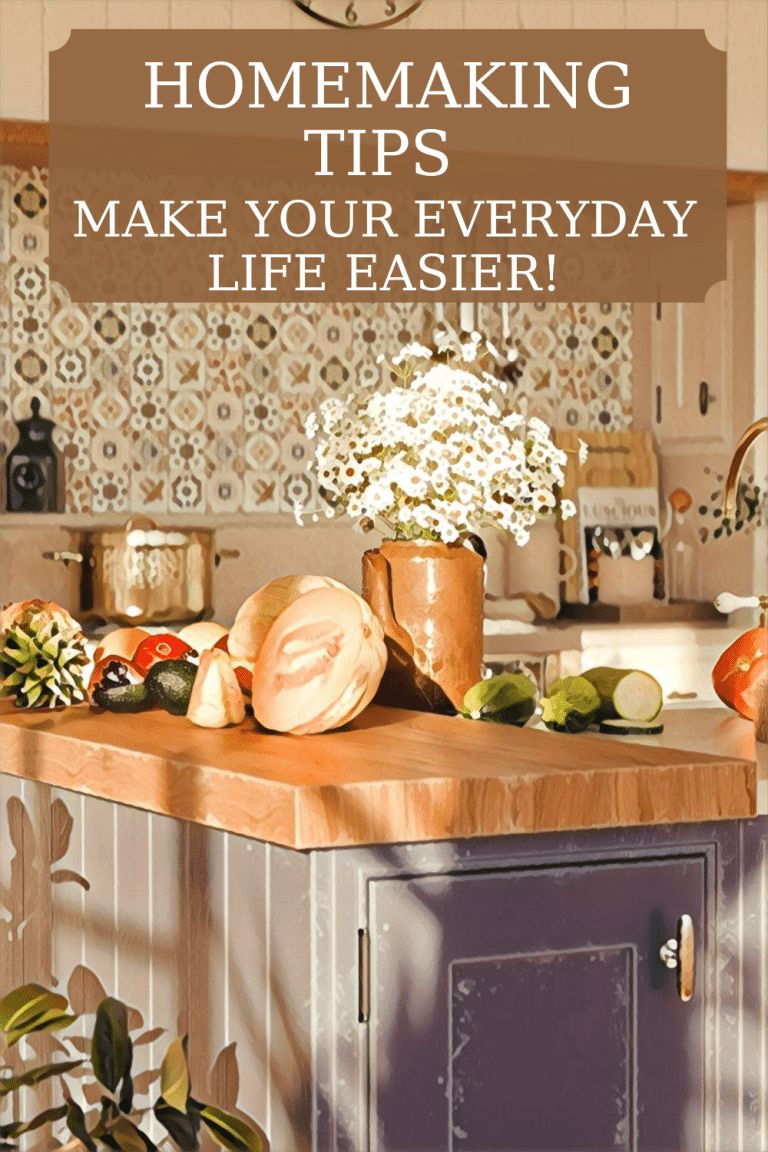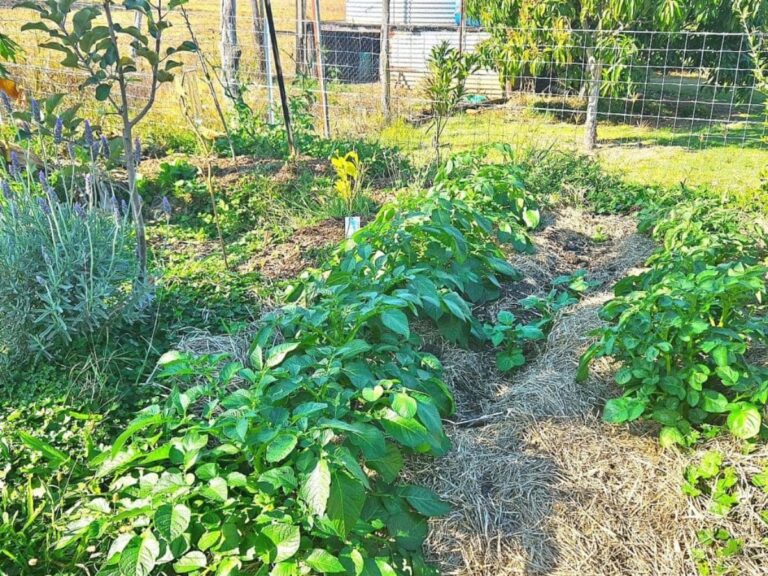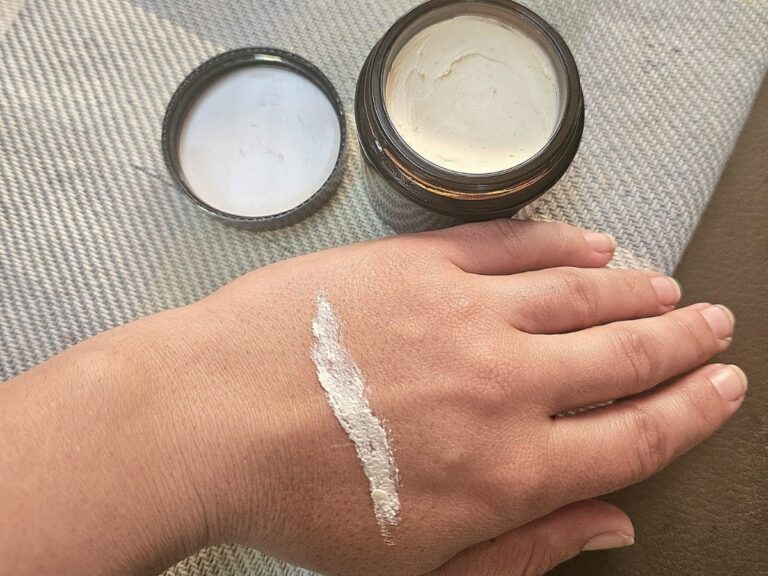Sourdough Questions And Answers
Sourdough has been around for hundreds of years! It’s not a new concept or idea. Making sourdough at home is healthier, cheaper and very fulfilling.
While sourdough is making a combat there are still many where this is not the norm. Learning something new is the hardest part of starting.
Once you start and make a routine it will only get easier. For your convenience I have added a table of contents so you can jump to the section you want to read! So, let’s get started with answering some very common questions around Sourdough!
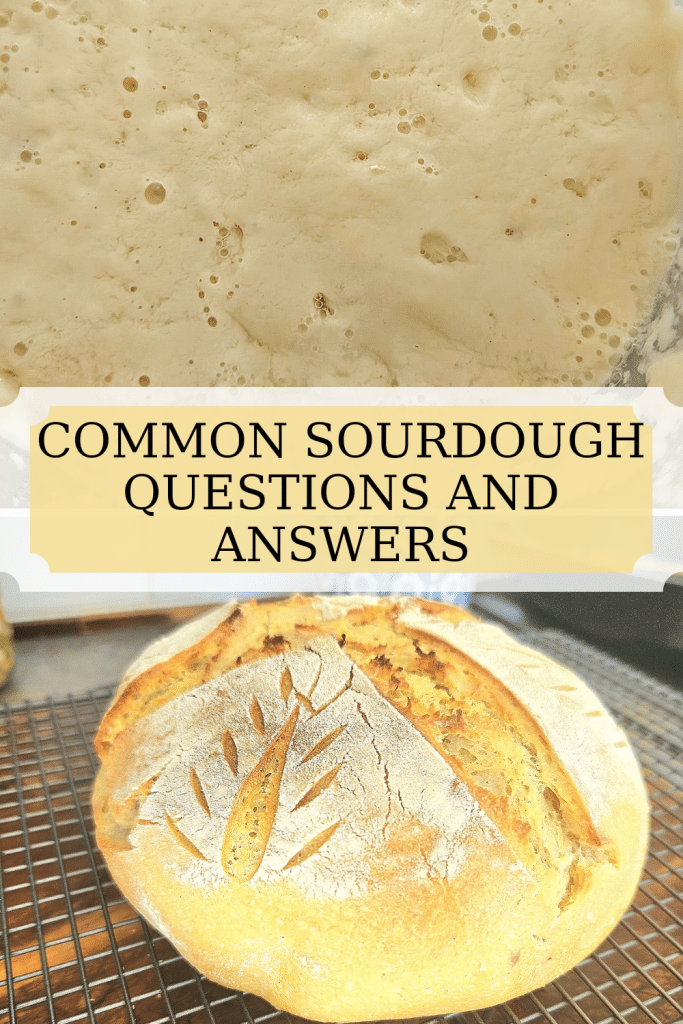
- What Is Sourdough?
- How Do You Make A Sourdough Starter?
- Can You Make Gluten Free Sourdough Starter?
- What Kind Of Container Can I Keep My Sourdough Starter In?
- Do I Have To Throw Out My Sourdough Discard?
- How Do You Keep A sourdough Starter Alive?
- What Is That Liquid On Top Of My Sourdough Starter?
- How Do You Store Your Sourdough Starter?
- How Do I know When My Sourdough Starter Is Active?
- How Often Do I Feed My Sourdough?
- How Can I Make My Sourdough More Or Less Sour?
- I Forgot To Feed My Sourdough Starter Is It Dead?
- Do I Need To Follow A Strict Baking Schedule?
- What Tools Do I Need To Make Sourdough Products?
- How Do I Store Sourdough Bread?
- What Can I Use Instead Of A Dutch Oven?
- What Can I Do With Over Proofed Loaves?
- What Can I Do With Under Cooked Sourdough Bread?
- What Can I Do With Hard Sourdough Loaves?
- Why Didn't My Sourdough Bread Rise?
- What Are Beginner Sourdough Recipes?
- Conclusion
What Is Sourdough?
Sourdough is fermented flour with water. The fermentation process makes the flour more sour due to the natural wild yeast found in the flour and air. Lactic acid forms as the flour ferments which gives sourdough products there tangy and delicious flavour.
The wild yeast that accumulates in sourdough starter is what helps to make bread rise naturally. The fermentation of flour reduces the amount of gluten found. This is why people can generally tolerate sourdough better than normal white bread found in the shops.
How Do You Make A Sourdough Starter?
Making a sourdough starter from scratch is really very easy. All you really need is flour, water and a jar to put it into! Now, there are so many choices when it comes to flours. Some flours work better when you are starting from scratch than others.
The best flours to start with are unbleached flours. Rye flour and wholewheat flours tend to work a bit better and faster when making a sourdough starter from scratch because they are minimally processed.
It normally takes about one week of feeding your sourdough starter everyday flour and water before it is strong and active enough to use to bake bread with. I would not use tap water for your sourdough starter use filtered or spring water instead.
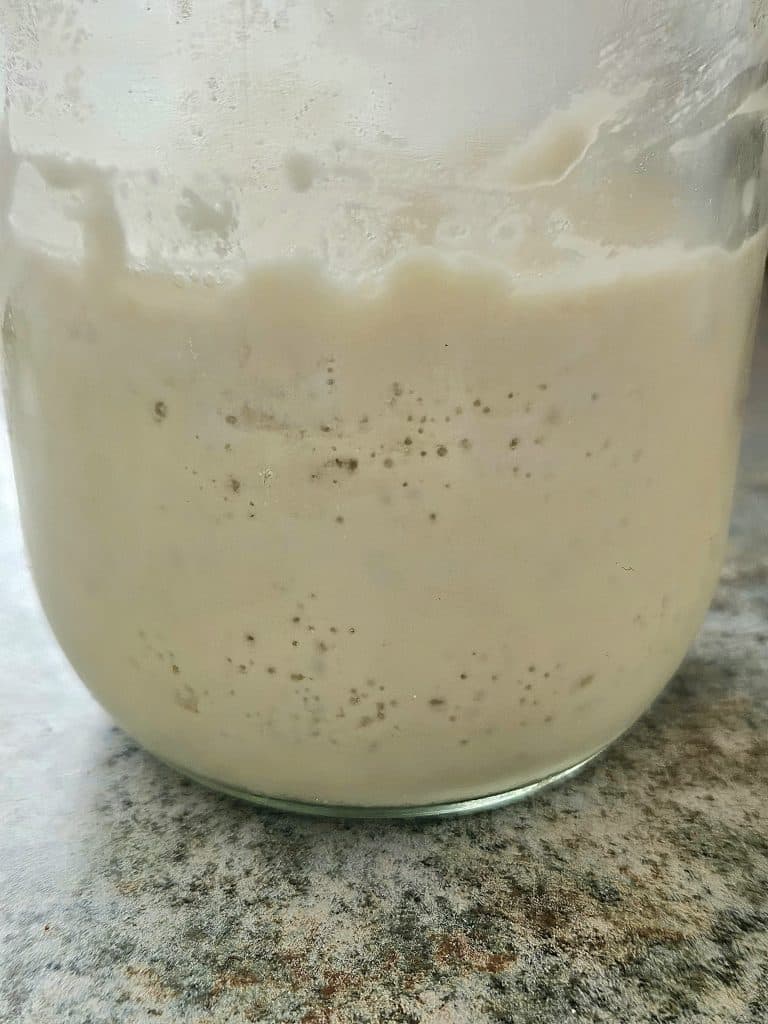
Can You Make Gluten Free Sourdough Starter?
Yes, you can make gluten free sourdough starter much in the same way as you make normal sourdough starter. Choose which type of gluten free flour you want. Then start mixing water with it in a jar until it’s combined.
Gluten free flours can take a bit longer before they take off. It can take about 2 weeks and they don’t have the same look as regular flours. There are some differences in how you work with gluten free sourdough starters and their textures, but it can definitely be done!
What Kind Of Container Can I Keep My Sourdough Starter In?
The best containers to put your sourdough starter in is glass containers. Glass containers don’t break down over time like plastic ones. They don’t absorb odours or smells. You can sterilise glass containers if need be and you can see through them easily and see how your sourdough starter is looking.
Do I Have To Throw Out My Sourdough Discard?
I personally do not like wasting food so wouldn’t throw out the sourdough discard. If you don’t have a lot of sourdough discard, you can accumulate it over the next week in a glass jar and store in the fridge.
When you have enough to make things like Sourdough discard Pancakes, Easy Homemade Sourdough Discard Waffles or Sourdough Crepes!
Sourdough discard is still fermented flour and a lot healthier for you, so I wouldn’t waste it. You can also feed it to your chickens if you have as well.
How Do You Keep A sourdough Starter Alive?
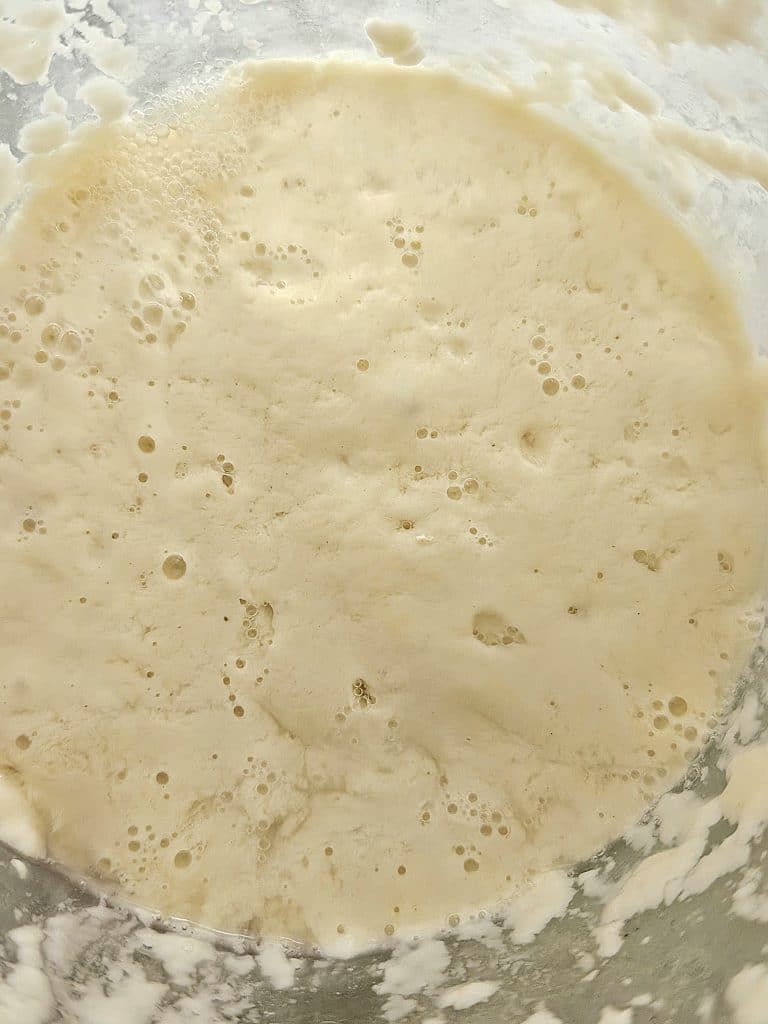
You can keep a sourdough starter alive in the fridge or on the counter. If it’s on the counter, you will need to feed it and use it regularly as it will ferment a lot faster. It will need to get fed at least one if not even twice a day if left on the counter.
Sourdough starter that is stored in the fridge needs to get fed about once a week. It can last longer without being fed, but this will normally mean you will have to dump some of the original starter out and give it a decent feed to revive it.
What Is That Liquid On Top Of My Sourdough Starter?
You might find that a liquid forms on top of your sourdough starter sometimes. This generally happens when your starter gets hungry and it has used up all its food supply. This is a good indication to feed your starter.
That hooch does not mean your starter is dead, it’s the by-product of fermentation and is alcohol forming. Just dump that top part out or you can mix it back into your sourdough starter and give it a good feed.
It should be happy and bubbly again in no time.
How Do You Store Your Sourdough Starter?
Normally sourdough starter is stored in a glass jar with a lid placed loosely on top. This starter can be kept either on the counter, but it will need to be fed regularly. Or you can keep it in the fridge, and it will need to be fed about once a week to keep it happy and healthy.
You can even freeze your sourdough starter, and it will last months in the freezer no issue. You will just need to take it out let it dethaw and give it a good feed to reactivate it.
How Do I know When My Sourdough Starter Is Active?
There are a few ways you can tell if your sourdough starter is strong and active. One is after a feed about 6 to 12 hours later it should have doubled in size and have lots of bubbles forming.
The other way you can tell is by doing a float test. A float test is when you get a bit of sourdough starter and drop it in a bowl of water. If it sinks its not ready for baking bread yet, if it floats then it has enough carbon dioxide to make your bread rise!
How Often Do I Feed My Sourdough?
This can vary depending on how much you use it. I almost always feed mine after I use it to keep it active and going. If you keep your sourdough starter in the fridge it needs a feed about once a week if you are not using.
If your sourdough starter is kept on the bench it will need to fed and used more regularly. It will need a feed at least once if not even twice a day as it ferments a lot quicker with the warmth than in the cold.
How Can I Make My Sourdough More Or Less Sour?
There are several things you can do to help make your sourdough starter less sour. The first thing you can do is to make sure you starter has had a good feed and isn’t too sour to begin with.
The second thing is to make sure your sourdough product ferments at a cooler temperature so lactic acid forms instead of acetic acid. Slightly cooler temperatures let’s your sourdough product ferment at a slower rate which gives it a milder taste.
You can also do the 2nd fermentation part of most recipes in the fridge. This allows the sourdough product to continue to rise and ferment but at a very cold temperature which also helps reduce the sourdough taste a lot!
I Forgot To Feed My Sourdough Starter Is It Dead?
If you have left your sourdough starter in the back of the fridge for a while and think it’s dead you may still be able to revive it. You will probably notice hooch has formed at the top of your starter which is a dark liquid that occurs from the fermentation of the grain. It indicates your starter is very hungry.
While it prefers to be fed weekly, I have restored sourdough starter that was left in the fridge for a whole month!
Dump out the majority of this hooch and give your starter a good feed. You will want to give it a feed twice a day for the next couple days to really get it back and active again.
Do I Need To Follow A Strict Baking Schedule?
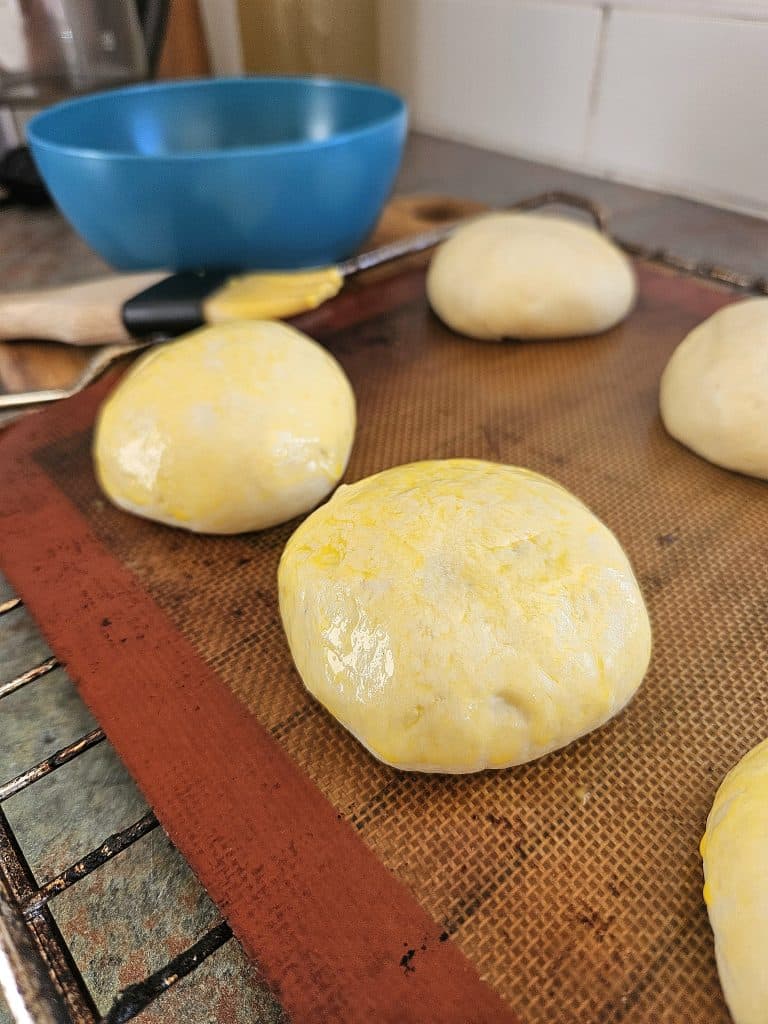
The beauty with sourdough is you do not need to follow any strict schedules. They are more like guidelines. If you forget to feed your sourdough starter for a few days or even a few weeks in the fridge it’s okay it can be revived.
If you are fermenting bread or any other sourdough product and don’t have enough time to get the 2nd rise going before baking, it’s okay. You can simply place the sourdough in the fridge to continue its second slow rise. Then bake it within the next 12hours to 36 hours that suit you.
You can speed up the sourdough process by placing it in a hotter spot. Or slow it down by placing it in a cooler spot. It’s all about learning what suits you and experimenting. When it’s getting close to baking time make sure to preheat your oven first.
It can get up to temperature as this sometimes can take a solid 30 minutes or more. It’s a journey and you will find a schedule and rhythm that works for you, so don’t stress!
What Tools Do I Need To Make Sourdough Products?
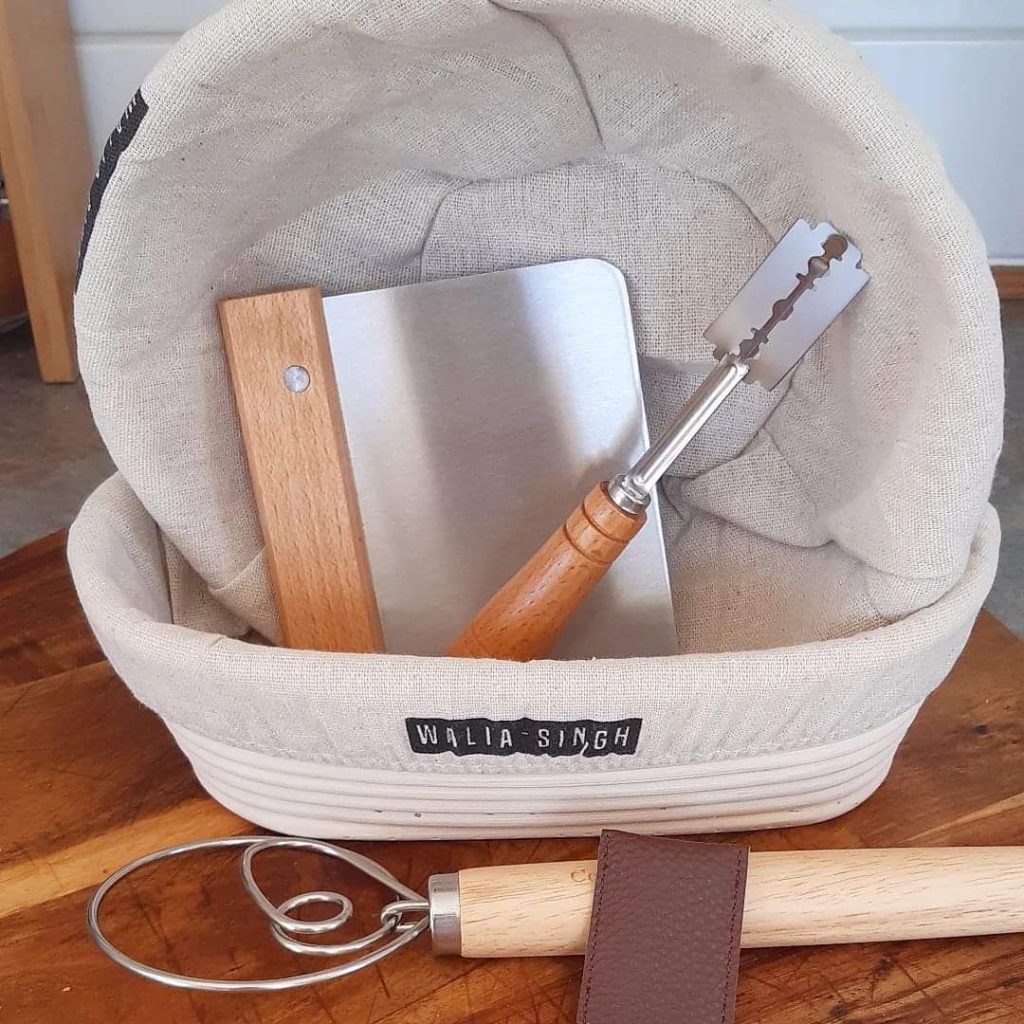
This post contains affiliate links which means I may earn a small commission if you choose to purchase using my links at no extra cost to you. See my disclosure policy here.
There are only a few things you actually need if you want to make sourdough bread. Depending on what you want to do, how often you want to bake will depend on what items you might want. Certain products help to make sourdough baking easier and more fun. So here is a quick list of essentials and then helpful tools to own.
Essential Sourdough Products
- You will of course need to have sourdough starter! You can of course make your own from scratch or there are kits out there if you really want a kit. But a kit is not necessary!
- Jars: You will need a wide mouth preferably large glass container to store your sourdough starter in. Glass is the best option and believe me you will be happy to have a wide mouth one. This will allow you to easily mix and scoop out sourdough starter as needed.
- Measuring cups and spoons: when measuring out your ingredients for all baking products. I highly recommend getting a good stainless-steel set, they don’t break easily, and the numbers don’t rub off like with ceramic ones!
- A batter bowl with lid: You will want some sort of bowl when doing your second rise and this multipurpose one is amazing. It has measuring lines so you can use it as a measuring cup, it has a lid to keep your dough fresh and you can easily see how much your dough has risen. Highly suggest.
- Bread Knife: You really want a bread knife to cut your sourdough bread with! A normal knife doesn’t work nearly as well and is messier than a good quality bread knife. I personally would choose a stainless-steel bread knife that is one solid piece. They last longer than 2 pieces joined together and are better quality.
Helpful But Not Necessary Tools
- Bench Scraper: While this tool is very useful it is not something you absolutely need. A bench scraper is used to help divide the dough, scrap it of the bench, turn the dough and can help you shape your dough as well. I do love mine and they are not expensive!
- Dough Whisk: Also, not something you have to have but oh my goodness does it make a difference! I use mine every single day pretty much!
- Bread Lame: You can also use a very sharp knife, but a bread lame is a small stick with a blade attached to the end. You use this to score your bread and can also make lovely designs and patters on your sourdough products.
- Dutch Oven With A Lid: If you plan on making sourdough artisan loafs you will need a Dutch oven. You can use high springform cake pans or casseroles dishes and cover them as well. You essentially are trying to keep moisture locked in for the first part of the bread baking process.
- Silicone Mats: You can use parchment paper as well but it’s worth buying silicone matts as they are reusable and nonstick. I use them not just for baking bread products but also for baking vegetables or meat as well. They are easy to clean and will save you money in the long run.
How Do I Store Sourdough Bread?
There are several ways you can store sourdough bread. You can store it in a bread bag on the counter for a few days.
You can store sourdough bread in a ziploc freezer bag on the counter and it will stay softer as it won’t lose as much moisture. I like to make two and keep one pre-sliced in a ziploc freezer bag in the fridge and I’ll use that within a week.
The other one I store in a ziploc freezer bag also pre-sliced and place this one in the freezer. It can stay in the freezer for several months this way.
When you want to use it you can either take out the a few slices at a time and toast. Or take the whole loaf out and let it defrost in the fridge and enjoy.
You can also place it in the oven with a little water sprayed on top if it’s a cob loaf you are wanting to soften up and enjoy.
What Can I Use Instead Of A Dutch Oven?
A Dutch oven is used to create a steamy hot environment for your dough to bake in. Only certain recipes will ask for a Dutch oven to be used. If you don’t have one don’t worry, there are some other options.
- You can bake your loaf in a loaf pan and cover it with aluminium foil for the first part of the recipe and then remove when the recipe calls for the lid to be removed.
- Use a high springform cake pan. Place your dough with parchment paper at the bottom and cover with a lid or aluminium foil for the first part of the recipe. Uncover when the recipe says to remove the lid.
- You can also use a casserole dish and once again cover with aluminium foil or some sort of lid for the first part of the recipe. Uncover when recipe calls for lid to be removed.
What Can I Do With Over Proofed Loaves?
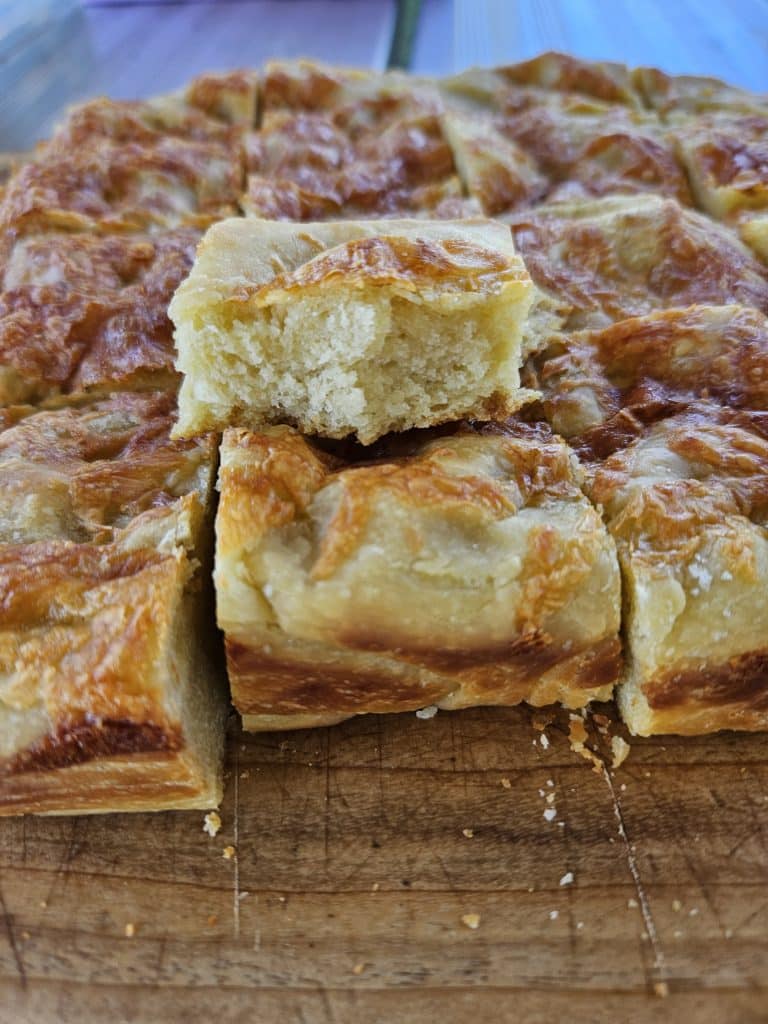
If you happen to overproof your sourdough bread and it has lost its elasticity don’t worry. It can still be used for other recipes like Focaccia, pizza crust and flat bread.
I have also managed to save a few by adding a bit more flour so that I could handle the over proofed dough. Then reshape it, place it in a banneton basket or bowl and let it sit in the fridge for a few hours before you bake it. I make sure to cover it with cling wrap or place it in a plastic bag.
This helps to ensure it doesn’t form a hard crust on the outside. Placing your dough in the fridge for a few hours will help it hold its shape and the bread has come out pretty good every time.
What Can I Do With Under Cooked Sourdough Bread?
If you take out a sourdough bread and cut into it and see it’s still not done on the inside, you can simply place this bread back in the oven. Let it cook for another 10 to 20 minutes and it should cook all the way through.
Generally, as a rule you want to let your bread rest until it has cooled before cutting into it as it’s still cooking on the inside.
Next time you bake bread you might want to lower your oven temperature. Cook the bread for 10 to 15 minutes longer so that it cooks well on the inside without burning the outside.
What Can I Do With Hard Sourdough Loaves?
There are so many yummy things you can make with hard sourdough bread! Or sometimes you can even revive hard bread!
If you want to try and soften your bread you can spray the bread all over with water and place it in a preheated oven about 180C for 10 minutes or so. This can help to soften the loaf.
Or you can make some pretty awesome stuff with hard sourdough bread like croutons, breadcrumbs, a breakfast casserole or breakfast pudding! Personally, I love making a breakfast casserole with it.
The custardy mixture slowly absorbs into the bread overnight and is softened and ready for baking in the morning. No matter what you choose to do with it, don’t throw it out you can definitely still use hard bread in your kitchen!
Why Didn’t My Sourdough Bread Rise?
There are several reasons why your sourdough bread didn’t rise. One of the reasons could be that your sourdough starter isn’t yet strong enough or active enough to make your bread rise. Y
ou want to use a sourdough starter that has lots of bubbles and is an established starter. It generally takes about 2 weeks to have a strong enough starter. If your sourdough starter has doubled in size and is bubbly that is when it’s at its peak for baking.
The other reason is you might not have let it rise for long enough. The first rise can take 6 to 12 hours depending on the temperature. If it’s hot or warm it will ferment and rise faster than if it’s cold. The second rise can take anywhere from another 2 to 4 hours before you start to notice a rise. Sometimes it just takes patient.
Now it can also have over proofed so already past it peak of rising and is now on the downhill. Over proofed sourdough bread has lost its elasticity and doesn’t tend to rise very well. You can read my suggestions above on what you can try with over proofed sourdough bread.
What Are Beginner Sourdough Recipes?
Making sourdough does not have to be hard at all! It’s all about who is creating the recipes and how complicated they want to make it. I try and make very simple recipes that anyone can make.
Finding good recipes is the first part and the second is just getting used to the feel and routine of baking with sourdough.
The most basic beginner sourdough recipes would be sourdough discard recipes. Recipes such as Sourdough Pancakes, Sourdough Waffles, Sourdough Crepes or Sourdough Crackers.
The next best options would be Sourdough Focaccia, try a sourdough Dutch Baby Pancake, or my most popular Sourdough French Bread Recipe!
Conclusion
I hope this post was able to answer some of the questions you might have had about sourdough and sourdough bread. With practice and time, you have your own unique rhythm in the kitchen and understand the feel of a sourdough bread.
The more you bake and use it the easier it will become. Hope you have a lovely day and much success in your sourdough baking journey!

